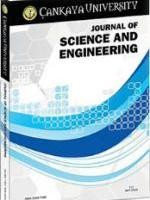Innovative Teaching Pedagogy for Teaching and Learning of Bayes' Theorem
Innovative Teaching Pedagogy for Teaching and Learning of Bayes' Theorem
___
- [1] Nguyen, H. T., & Thach, N. N., “A Panorama of Applied Mathematical Problems in Economics”, Thai Journal of Mathematics, 2018.
- [2] Sahai, H., “Teaching Bayes' Theorem using examples in medical diagnosis”, Teaching Mathematics and its Applications: An International Journal of the IMA, vol. 11(4), pp. 175-179, 1992.
- [3] Kolb, B. G., “Brain plasticity and behavior”, Current Directions in Psychological Science, vol. 12(1), pp. 1-5, 2003.
- [4] Florens, J. P., “Elements of Bayesian Statistics”, New York: Taylor & Francis Inc, 2019.
- [5] Green, K. a., “Reorganizing freshman business mathematics, I: background and philosophy”, Teaching Mathematics and its Applications. An International Journal of the IMA, vol. 27(1), pp. 11-23, 2008.
- [6] Bolstad, W. M., “Teaching Bayesian statistics to undergraduates: Who, what, where, when, why, and how”, Proceedings of the Sixth International Conference on Teaching of Statistics, 2002.
- [7] Lecoutre, B., “Training students and researchers in Bayesian methods”, Journal of Data Science, vol. 4(2), pp. 207-232, 2006.
- [8] Holt, C. A., “Classroom games: Understanding bayes' rule”, Journal of Economic Perspectives, vol. 10(2), pp. 179-187, 1996.
- [9] Sedlmeier, P. &., “Teaching Bayesian reasoning in less than two hours”, Journal of experimental psychology: general, vol. 130(3), pp. 380, 2001.
- [10] Kurzenhäuser, S. &., “Teaching Bayesian reasoning: an evaluation of a classroom tutorial for medical students”, Medical Teacher, vol. 24(5), pp. 516-521, 2002.
- [11] Gelman, A. C., “Bayesian data analysis (2nd ed.)”, London: Chapman and Hall, 2004.
- [12] Jackman, S., “Bayesian analysis for the social sciences”, Chichester, United Kingdom: John Wiley & Sons, 2009.
- [13] Kruschke, J. K., “Bayesian estimation supersedes the t test”, Journal of Experimental Psychology: General, vol. 142(2), pp. 573, 2013.
- [14] Faulkenberry, T. J., “A Simple Method for Teaching Bayesian Hypothesis Testing in the Brain and Behavioral Sciences”, Journal of Undergraduate Neuroscience Education, vol. 16(2), pp. 126-130, 2018.
- [15] Rouder, J. N., “Teaching Bayes’ theorem: Strength of evidence as predictive accuracy”, The American Statistician, vol. 73(2), pp. 186-190, 2019.
- [16] Rässler, S., “Statistical matching: A frequentist theory, practical applications, and alternative Bayesian approaches”, Springer Science & Business Media, vol. 168, 2012.
- [17] Walpole, R. E., “Essentials of Probability and Statistics”, Pearson, 2013.
- [18] Pishro-Nik, H., “Introduction to probability, statistics, and random processes”, Kappa Research LLC, 2014.
- [19] Anderson, D. R., “Statistics for business & economics”, Cengage, 2015.
- [20] Leon-Garcia, A., “Probability, statistics, and random processes for electrical engineering”, Pearson, 2017.
- [21] Render, B. S., “Quantitative analysis for management (13 ed.)”, Pearson, 2018.
- [22] Giri, N. C., “Introduction to Probability and Statistics”, Taylor and Francis, 2019.
- [23] Walpole, R. E., “Introduction to Statistics”, New York: Macmillan, 1982.
- Yayın Aralığı: Yılda 2 Sayı
- Başlangıç: 2009
- Yayıncı: Çankaya Üniversitesi
Tiamiyu ABD'GAFAR, Falade KAZEEM IYANDA, Quadri RAUF, Sıkırulaı AKANDE
Shehu Conformable Fractional Transform, Theories and Applications
Mohamed ELARBI BENATTIA, Kacem BELGHABA
Innovative Teaching Pedagogy for Teaching and Learning of Bayes' Theorem
A New Extension of Modified Gamma and Beta Functions
Umar Muhammad ABUBAKAR, Salım Rabı'u KABARA, Muhammad Auwal LAWAN, Faısal Adam IDRIS
Hybrid Block Method for Direct Integration of First, Second and Third Order IVPs
Adeyemi OLAGUNJU, Emmanuel ADEYEFA
Solution of Integro-Differential Difference equations via Differential Transform Method
